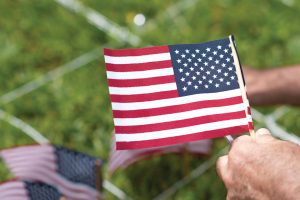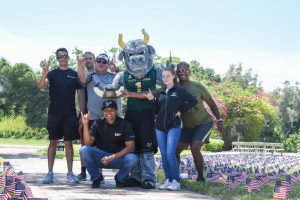Roly Poly Revelation
Student discovery of sea creature yields new scientific opportunities
Biologist Carlos Santamaria, PhD, is glad his team of student researchers didn’t follow directions when he sent them out to collect specimens from the mangrove forests of Sarasota and Manatee counties.
“I have to give them credit for not listening,” said Santamaria, describing how the specimens of Ligia isopods that former students Edgar T. Bischoff, Moe Aye, Keith W. Phillips and Victoria Overmeyer brought back had never been found so far north.
Ligia isopods are seaside-dwelling cousins of the land-based “roly poly” bugs that curl into a ball when you touch them. The particular species of Ligia isopod the students collected – L. baudiniana – was some 200 miles north of its previously documented territory. The team’s research was published in November 2017 in the online, open-access journal F1000 Research.
"This work was really about listening to people. We assessed what community features are most helpful to people as they age."
A crustacean and a prey item for birds, crabs and other creatures, Ligia isopods never venture far from their rocky intertidal habitats. Eggs emerge as fully formed juveniles that don’t disperse into the ocean. Ligia isopods also dry out quickly, and they can’t swim far.
All of this tends to keep them in one spot and results in subtle evolutionary changes. The process, called “cryptic speciation,” causes different species of Ligia isopods to have identical forms, or morphological characteristics, but unique genetic signatures.
The trick, however, is in telling the more than 40 different species of Ligia isopods apart – an area in which Santamaria has deep expertise. Santamaria recognized male L. baudiniana specimens based on their telltale reproductive features, which he describes as “like a drumstick and sickle.” Genetic tests confirmed the discovery.
Understanding how different species evolve can reveal fundamental insights into their evolution and behavior. Santamaria saidbthe students’ discovery “opened up whole new avenues of research. “Now, we can do physiological comparisons across species,” he said. “We can study their susceptibility to pollution, their ability to survive in saltier waters and even the bacteria in their gut.”
Because the creature is found only among mangroves and not on artificial structures such as piers and boat docks, the finding also has important implications for the conservation of mangroves.


“It might serve an important bio-indicator of ecosystem health,” Santamaria said.
Santamaria “fell in love with isopods” as a doctoral student at Texas A&M University, working with advisors Luis A. Hurtado and Mariana Mateos. So far, he has studied Ligia species found in Florida, Mexico, Hawaii, South Africa and the Pacific Ocean.
“Because their dispersal is so limited, every population is a replicate of a natural evolutionary experiment,” he said. “They’re a perfect living laboratory and a wonderful teaching tool.”





